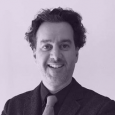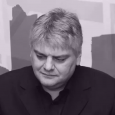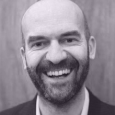Paolo Ceccarelli, Pilar Maria Guerrieri, Giulio Verdini, Linda Zardo, Francesco De Agostini, Lorenzo Mazzali Giacomo Pirazzoli, Tiziano Cattaneo and Erik Bjorsten are part of ILAUD’s active Team but ILAUD’s Community is much wider.
Since 1976, ILAUD through its teaching and research activities has been working with many people around the world, building a large vast international ILAUD community: 70 universities and research centres, 200 teachers and tutors, more than 1500 alumni from all over the world.
It is a very important human and knowledge capital, made up of teachers and researchers, professionals, social entrepreneurs, civil servants who operate with competence and commitment in their respective fields. They are significant actors who can share experiences and visions.
It is an important resource in this international circumstance that requires the development of innovative proposals based on a solid direct knowledge of the real world.
ILAUD is working to enhance the knowledge and moral resources of this Community.
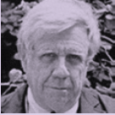
Paolo Ceccarelli is town planner and professor at the Faculty of Architecture of the University of Ferrara, which he founded in 1992 and of which he was Dean until 2002. He was Rector of the University Institute of Architecture of Venice, IUAV (1982-1992). President of ILAUD, International Laboratory of Architecture and Urban Design. Red Alvar coordinator that brings together 12 Latin American and 4 European Faculties of Architecture. Director of the Urban, Territorial, Environmental Research Center, CRUTA of the University of Ferrara. Coordinator of the Doctorate of Regional Economics of the University of Ferrara.
He has extensive international teaching experience. He has been Visiting Professor several times at the Massachussets Institute of Technology and at the University of California, Berkeley and Santa Cruz; he has carried out research at the CES of Harvard University and the Joint Center for Urban Studies Harvard University and MIT.
He has taught at Waseda University in Tokyo and in numerous European universities. He has held lectures and seminars in Latin American, African, Asian and Australian universities. Head of the China Project among the architecture and urban planning schools of the South China University of Technology, Guangzhou; Sun Yat-Sen University, Guangzhou; University of Hong Kong and University of Ferrara.
Coordinator of the supplementary program for the Degree in Architecture at the PUC del Paraná, Curitiba. Responsible since 1992 for the “International workshop in urban design and environmental planning” of the University of Ferrara, University of California Berkeley and Waseda University, Tokyo.nCanon Foundation Award 2002, Commonwealth Fellow of the Harkness Foundation, British Academy Fellow.
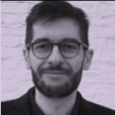
Architect and PhD in Urban and Regional Development (2007), is Reader at the School of Architecture and Cities of the University of Westminster, and Visiting Professor at the Polytechnic University of Ben Guerir, in Morocco. Previously he was Associate Professor at Xi’an Jiatong-Liverpool University, in China. He regularly serves as scientific and policy advisor for UNESCO. His research is focused on culture and sustainable urban development, particularly in emerging countries. He is currently involved in a project on education for sustainability in urban studies.

Graphic designer, lived for six year at the GDC Dormitories in Urbino. Lives and work in Milan
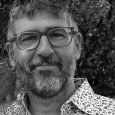
Architect since 1989. I worked in the practice of Giancarlo De Carlo, with whom I graduated in Genoa.
I was responsible for the development & regeneration projects of a holding (active in the Real Estate sector) dealing with integrated planning and development, coordinating international multidisciplinary work groups.
For the past year, back in Genoa, I have been responsible for the regeneration projects of a company 51% owned by the Municipality of Genoa within which I mainly deal with the coordination of external projects, and I play the role of project manager and field director. Today my interest is focused on the search for the highest possible quality in public procurement, with particular reference to public spaces and the quality of relations between space and community.
Active ILA.&UD member from 1990 to 2001.
Vice president of the Order of Architects PPC of the province of Genoa for the four years 2021-2024.

Pilar graduated in architecture and works as an historian of architecture. She holds a Ph.D. with honors in ‘Architectural Composition, Theory and Criticism’ from Politecnico di Milano, in collaboration with the Indian National Trust for Art and Cultural Heritage in Delhi and Westminster University in London. She also holds a post graduate degree in Philosophy. She has been Associate Professor in Delhi at the Italian-Indian GD Goenka University and at present she is Adjunct Professor at Politecnico di Milano. Since 4 years she has been continuously collaborating with Ambedkar University Research Centre in Delhi as a Fellow Researcher. She is member of the International Advisory Council Member of the Indian Trust for Rural Heritage and Development (ITRHD).

PhD in Environmental Engineering, carried on her research on urban ecosystems services between Italy (Trento) and Netherlands (Wageningen). Member of PLANES (a research group on planning and ecosystem services) and DiMSUR (Technical Centre for Disaster Risk Management, Sustainability and Urban Resilience), at present works as environmental expert for UN-HABITAT (the United Nations Human Settlements Programme) in South-East Africa, following projects in Ethiopia, Mozambique, Malawi, Madagascar, Union of Comoros, and Zambia.

She graduated in Architecture at Istituto Universitario di Architettura di Venezia after a very promising career as a graphic designer. A field research and practice she never totally abandoned, as witness the thirty ILAUD Yearbooks she edited. She joined the ILAUD from the very beginning. For 43 years, she has been a crucial figure of the Laboratory, taking care of its governance with refined intellectual qualities and diplomatic disposition. In spite of their innate competitiveness, she was able to keep together several leading European and North American Schools of Architecture, working with them for months, shoulder-to-shoulder, in small Italian towns. Connie practiced both as an architect and as a planner in many countries around the world. She also was a beloved university teacher.
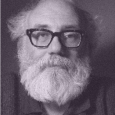
Architect with Giancarlo De Carlo Since 1992, with whom he is associated until his death in 2005.
He has experience with several international studios: Mecanoo Arkitecten, Alberto Cecchetto, Insula architecture and engineering, and other engineering companies.
From 2007 to 2010 he is Coordinator and project manager for two major urban interventions.
From 2007 to 2017 he was Chief Editor of the site of the Order of Architects PPC of the province of Milan, through which he collaborated with the PIM Study Center, with ANCE Assimpredil, OSMI / TEMA Chamber of Commerce, through communication projects for urban and territorial tools.
He carries out activities with his own studio deAgostiniArchitetti with particular attention to recovery and restoration, as well as building on buildings.

Giancarlo De Carlo was born in Genoa, Liguria, in 1919. In 1939 he enrolled at the Milan Polytechnic, where he graduated in engineering in 1943. During the Second World War he was enlisted as a naval officer. Following the armistice of 8 September 1943 he went into hiding, taking part in the Italian Resistance with the Movement of Proletarian Unity in which other Milanese architects such as Franco Albini also participated. Later he organized an anarchist-libertarian partisan group in Milan (the Matteotti Brigades), together with Giuseppe Pagano.
At the end of the war he publicized Le Corbusier in Milan and joined the anarchist movement, eventually participating in the first congress of the International of Anarchist Federations in Carrara. In this period, he began his collaboration with the anarchist magazine Volontà, in which he tried to launch new social ideas for reconstruction and the incessant need for social housing.
In 1948, he resumed his studies at the Istituto Universitario di Architettura di Venezia (Università Iuav di Venezia) where he received his degree in architecture on 1 August of the following year (1949).
In 1950 he opened his own studio in Milan. In 1951 he organized an exhibition on spontaneous architecture and, three years later, presented three short films written with Elio Vittorini in which he denounced the drift towards a modern metropolis run by bureaucrats and technicians, in whom interest in man is not a priority, and urged the spectator to act personally.
In 1955 he obtained a professorship in urban planning which he maintained until 1983, coming into contact and often clashing with the major names in Italian architecture and urbanism such as Giuseppe Samonà, Carlo Scarpa, Bruno Zevi and Paolo Portoghesi. Between 1952 and 1960 he was part of the new generation invited to participate in the Congrès Internationaux d’Architecture Moderne (CIAM).
In 1956, as an Italian member of the CIAM, he presented his own project for a housing complex in Matera in which all the principles of le Corbusier are ignored at the expense of specific attention to the geographical, social and climatic context of the region. It is clearly a strong break with the old generation of architects and the myth of a unique international architectural model. Thus, in the 1956 congress, the end of the CIAM was marked with the start of Team 10, which brought together the new generation of architects (including De Carlo, Alison and Peter Smithson, Aldo van Eyck, and Jacob Bakema) to conceive a new type of architecture, one which was better suited to local social and environmental conditions and where man “is not reduced to an abstract figure”.
In 1964 he was in charge of the first General Town Plan of the city of Urbino. Since 1965 he was in charge of designing the campus and facilities of the new University of Urbino. In the project the campus merges with the landscape, physically fitting into the hills. It was this project that saw him busy for many years of his life, and that gave him his first real international recognition.
From 1970, he is invited to teach in the united states and draws numerous editorial and professional impulses from this experience. He began building houses for workers in Terni, together with the workers and their families themselves. This was the first example of a participatory architecture in Italy, which turned out to be a success, being repeated with different results and procedures; in 1972 for the Rimini City Plan, and in 1979 for the recovery of Mazzorbo island in Venice.
In 1976 he founded the ILAUD (International Laboratory of Architecture & Urban Design), based on the principles of Team X, which for 27 years took place every summer in Italy, in order to carry out continuous research in the evolution of architecture.
In 1978 he founded and directed the magazine “Space and society” through which for more than twenty years he kept the network created by Team X active and guaranteed an alternative and independent voice in the European architectural sphere.
De Carlo died in Milan in 2005.

Carmelo Ignaccolo is an Adj. Assistant Professor in Digital Techniques for Urban Design at Columbia University GSAPP and a Ph.D. Candidate in City Design and Urban Technologies at MIT, DUSP. He is also affiliated with the MIT Civic Data Design Lab and the Harvard Center for European Studies.
